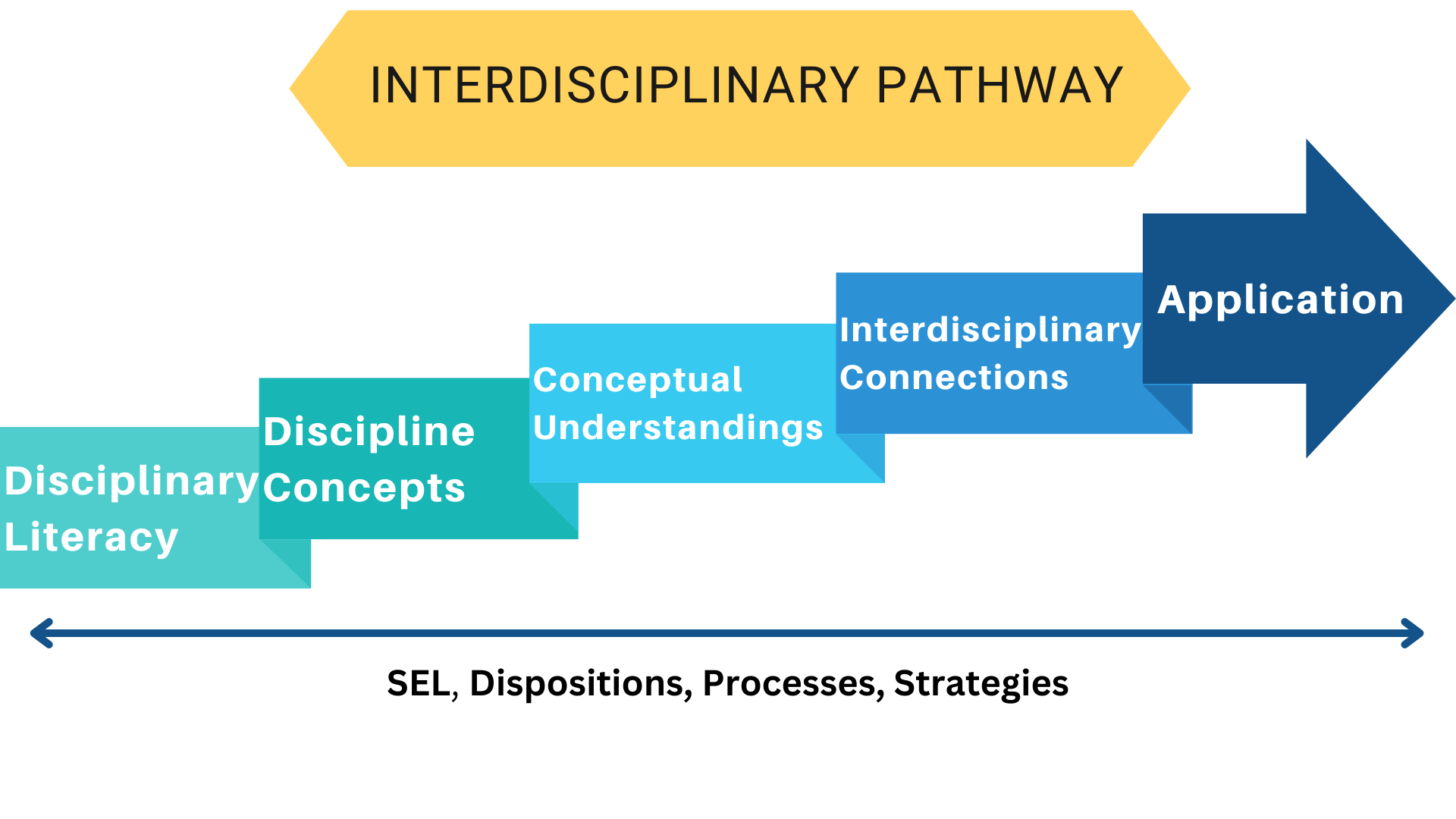


Disciplinary Literacy is the stage of instruction that focuses on developing students' skills and knowledge within a specific context of a particular discipline or subject area. As such, this stage is closely connected to standards. In looking at the structures of knowledge and processes, educators planning at this stage begin planning by identifying facts, skills, and processes in a particular content area. Said another way, they start planning from the bottom of the structures and move toward conceptual understandings. While this stage can facilitate content knowledge and support dispositions, skills, and processes, students may not have the opportunity to transfer their learning to new situations.

Discipline Concepts are the buckets of instruction that bridge the gap between standards and conceptual understandings. In this stage, teachers identify bigger ideas in their content areas, thereby helping students begin to transfer their learning. Concepts come from content standards. Since concepts are mental file folders that transfer across time, location, and situation, they provide a framework for students to build upon as they learn new information. This is from the neuroscience of how people learn. By developing an understanding of disciplinary concepts, students are better equipped to make conceptual connections within a discipline and can better transfer their knowledge across disciplines.

In this stage of the progression, teachers and students begin to see relationships between concepts, which are called conceptual understandings. These relationships may be within one discipline or across disciplines. Teachers are planning experiences that allow students to also see relationships between concepts. In thinking about the structures of knowledge and processes, teachers are beginning to plan from the top down. Said another way, they are planning backward and centering the transfer of learning. Typically, students are given more voice and choice in how they engage in their learning. In collaboration with teachers, students might identify real-world problems that will guide their learning and create solutions to those problems. Students can develop a more holistic understanding of issues that are meaningful to them and their community. This is also the stage where teachers and students might begin to identify conceptual understandings shared across disciplines, setting the stage for interdisciplinary instruction. Additionally, instruction in this phase may shift toward practices that allow for student-centered work and constructivist pedagogies, such as guided inquiry.

In this stage of the progression, students and teachers develop conceptual understandings, or relationships between concepts, and questions that bridge content areas. The learning experiences in this stage are designed to allow students to explore meaningful problems. Therefore, the school day can look very different from what most students and teachers are familiar with. Students are driving their learning pathways. Teachers are adapting to their needs while also ensuring that standards are being met. In this stage, students are generating conceptual understandings and questions.

In this stage of the progression, teachers are introduced to multiple instructional design formats that support interdisciplinary instruction. Recognizing that no two schools are alike, it is important to give teachers choices in terms of how they plan their interdisciplinary units. The instructional design formats focus on concept-based instruction to support interdisciplinary thinking, and contextual frameworks provide macro concepts to provide authenticity.

Dispositions, strategies, and processes are throughout the progression because they are best practiced in context. Interdisciplinary instruction gives students contextual practice in transferring strategies, processes, and dispositions to new situations and across disciplines. This practice should be purposely planned and monitored so that misconceptions do not develop.